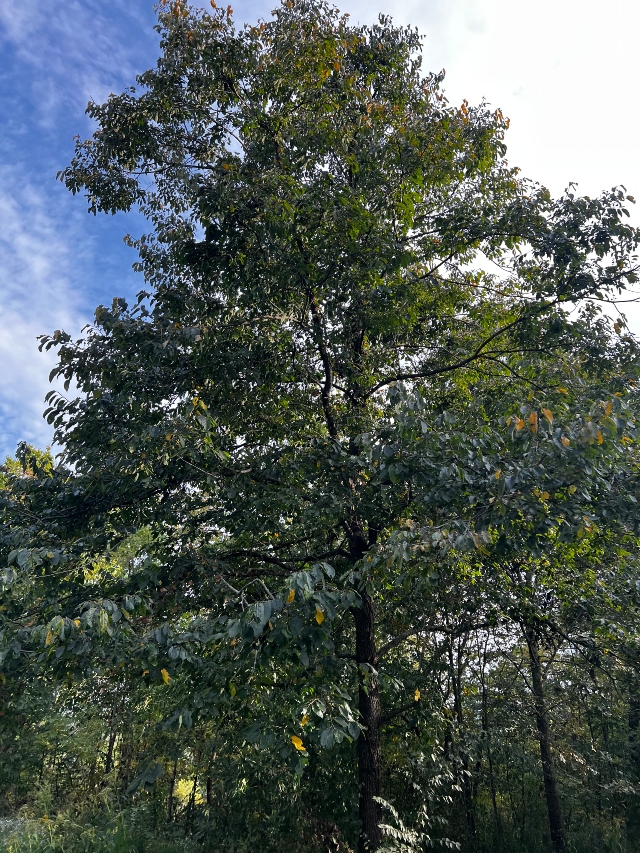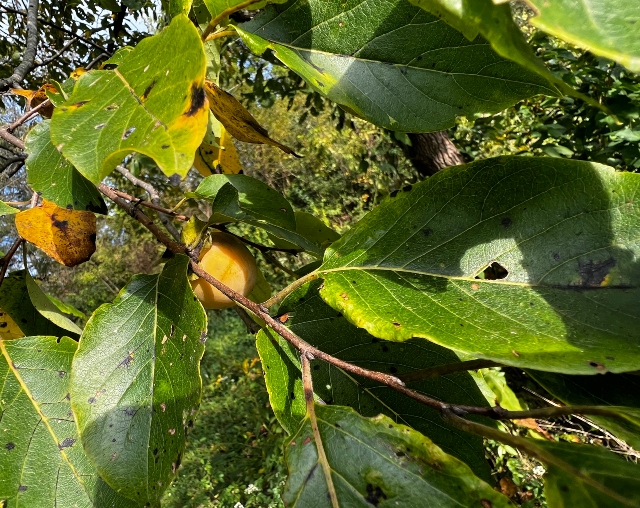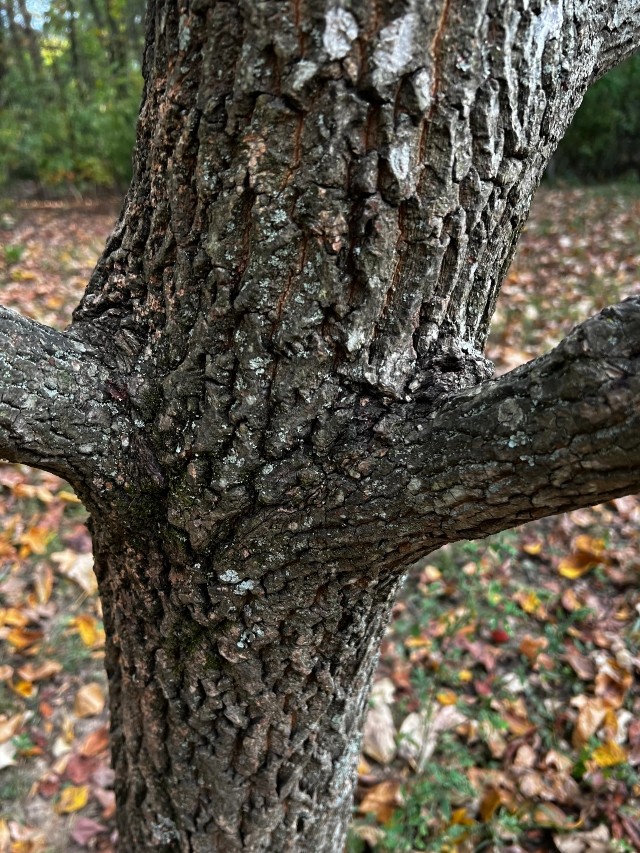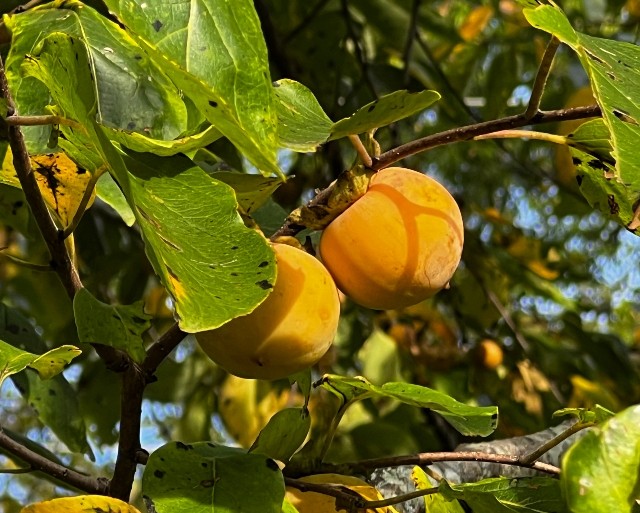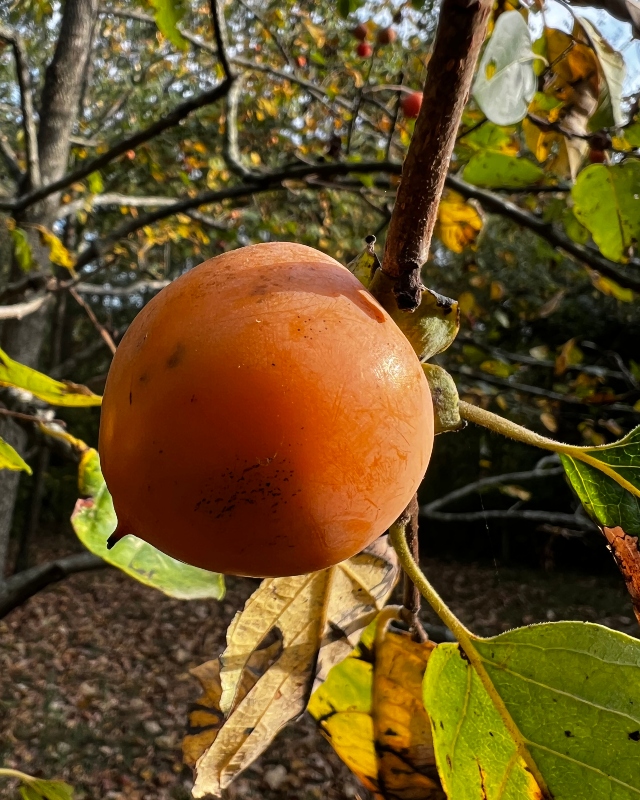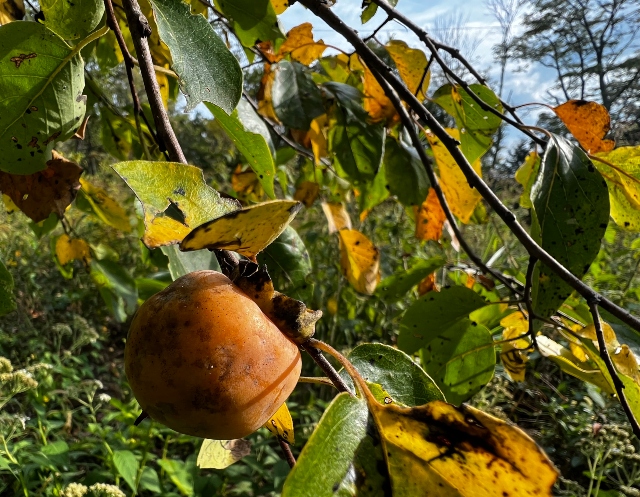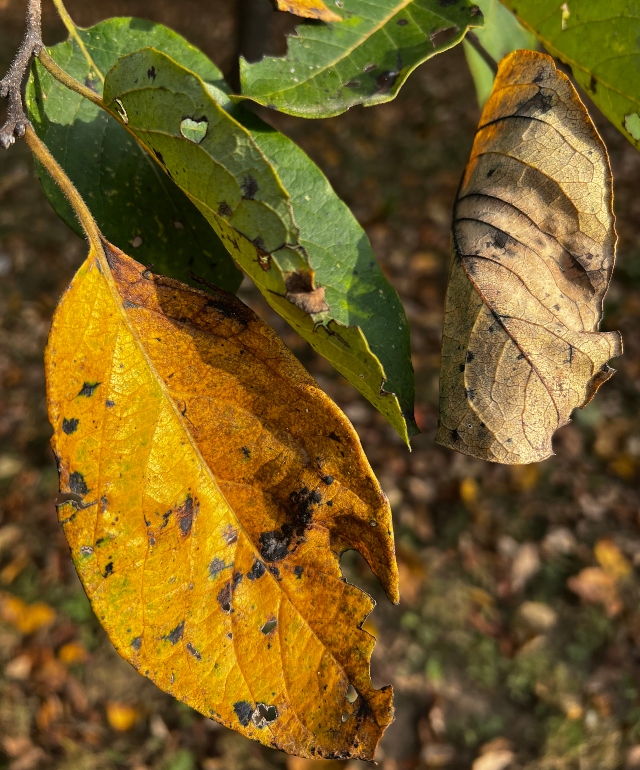While visiting southern Illinois this month, I encountered this fine tree and tasted its fruit, which happened to be in season.
American Persimmon is native to most of the eastern half of the United States. It grows in full sun and a wide variety of soils. The dark green leaves are your stereotypical “leaf shape,” so aren’t much help by themselves for identifying the tree. It grows wild, but has been cultivated for its fruit and wood since prehistoric times by Native Americans.
This tree can be 60 feet tall, but normally it doesn’t reach more than 20 feet. The trunk and branches are thin with grey-brown bark that is said to resemble reptile scales. The principal uses of the wood are for golf-club heads, shuttles for textile weaving, and furniture veneer.
American Persimmon is dioecious, which means some trees only produce male flowers and some trees only produce female flowers. The fruit is round, usually orange-yellow, and about two inches in diameter. Both the tree and the fruit are referred to as Persimmons, with the latter appearing in desserts and other cuisine.
During the spring, the flowers provide a rich source of nectar for Honeybees, Bumblebees, Small Carpenter Bees, Digger Bees, Mason Bees, Leaf-cutting Bees and Cuckoo Bees. Raccoons, Foxes, Black Bears, Skunks, Turkeys, Yellow-rumped Warblers, Cedar Waxwings, Catbirds, American Robins, Pileated Woodpeckers and Mockingbirds eat Persimmon fruit. The fruit is high in vitamin C, and extremely astringent when unripe.
Known scientifically as Diospyros virginiana, Diospyros means “divine fruit” in Greek.
American Persimmon is also known as Common Persimmon, Eastern Persimmon, Simmon, Possumwood, Possum Apples, and Sugar Plum.

